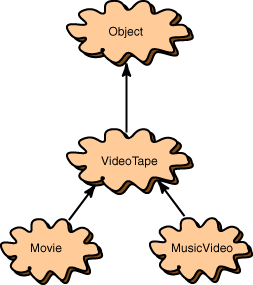Only One Class Hierarchy

Think about the answer a bit.
If you define a class that does not explicitly extend another class,
then it automatically extends Object.
If you define the class so that it extends a class other than Object,
then that class either extends another class or extends Object.
Now that class in turn must either extend
another class or extend Object.
There is no way to end the chain except by (ultimately)
extending Object.
You might cleverly try to have class A extend class B, and have class B extend class A. But this (and other loops) is not allowed.
Ultimately, every Java object inherits its object-like behavior
from the class Object.
When an object is constructed a chain of constructors is invoked
starting with the one in Object and ending with the
one in the requested class.
The fundamental parts of the object are put together by the
constructor in Object, then additional parts are added
down the chain until the requested class is reached.
Construction starts with the constructor in Object
because each constructor (except Object's constructor)
starts by invoking its super() constructor (with or without arguments).
